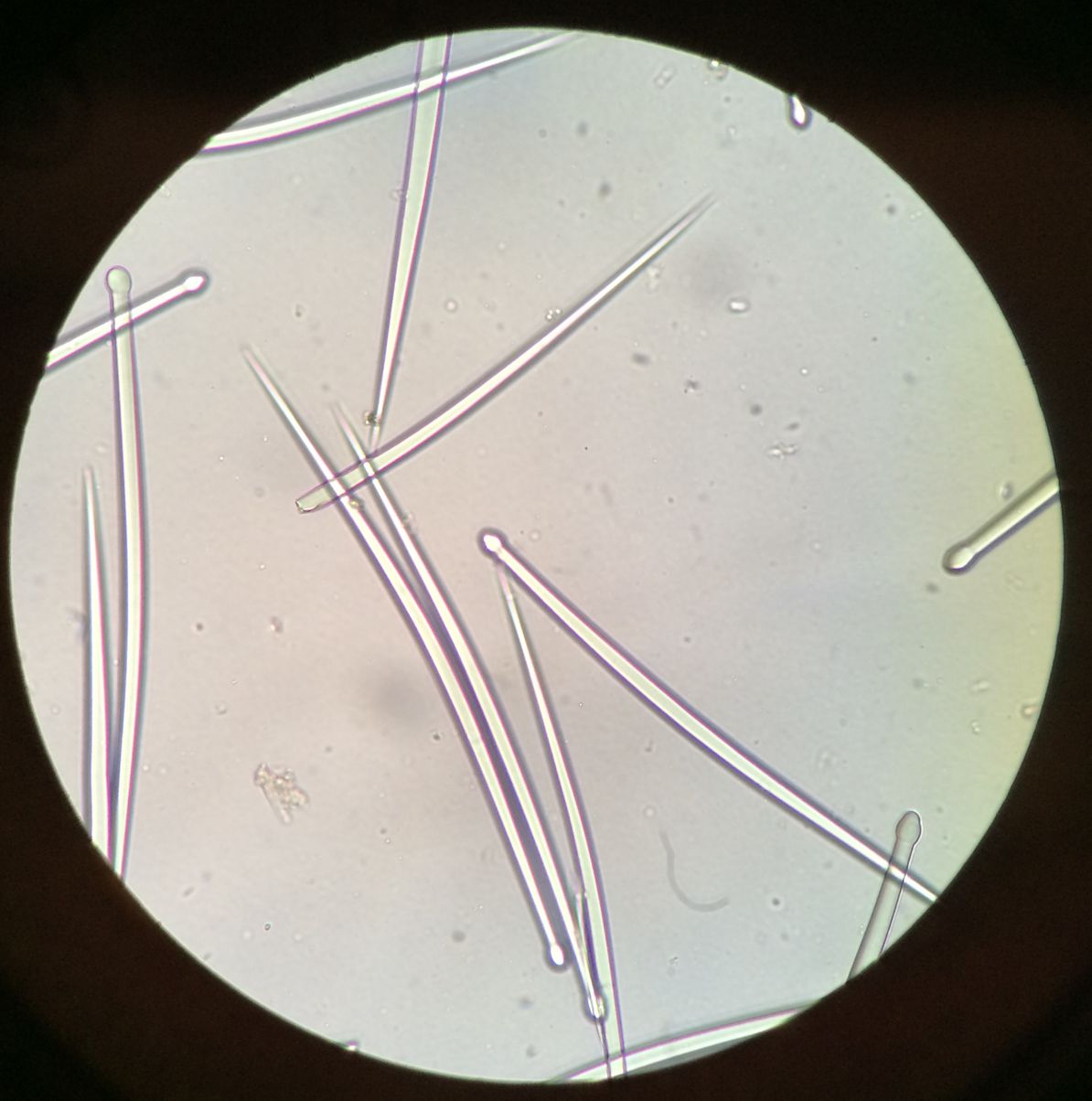Cliona californiana (de Laubenfels, 1932)Common name(s): Yellow boring sponge, Boring sponge, Sulphur sponge |
|
| Synonyms: Cliona celata var californiana, Pseudosuberites pseudos | 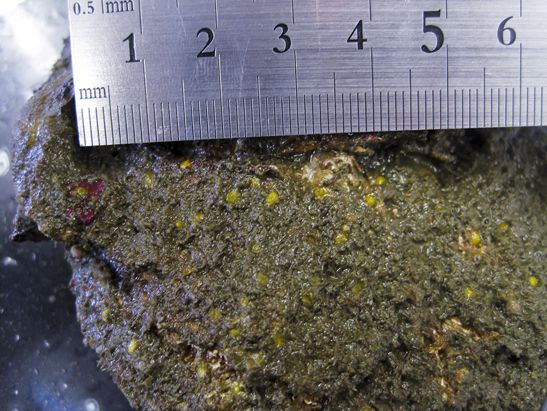 |
|
Order Hadromerida
Family Clionidae
|
|
| Cliona californiana in a Crassodoma gigantea (giant rock scallop) shell. The yellow sponge can be seen through the small excavated openings in the shell. | |
| (Photo by: Haruka Ito, August 2014) | |
Description: As a member of Class Demospongiae (which includes most of the commonly known sponges), the spicules are silicious (glass) but not 6-rayed nor fused into a lattice. This species bores in the shells of mollusks and plates of barnacles, and the main portion of the sponge which is exposed consists of small yellow patches 1-3 mm wide. The only spicules in this species are megasclere spicules: tylostyles of 200-310 micron length. The species does not produce microscleres. The tylostyles are scattered through both the surface and interior of the sponge.
How to Distinguish from Similar Species: Several other species of boring sponge are found here, but the bright yellow color and presence of only tylostyles distinguish this common sponge.
Geographical Range: Worldwide. On the Pacific coast, Baja California to Alaska. Mostly subtidal and less common in California and south
Depth Range: Low intertidal and subtidal to 120 m or more
Habitat: When small this sponge lives in shells of mollusks such as rock scallops, oysters, or moon snails, or in barnacle plates. May overgrow them and thickly coat the substrate if larger. In our area they are especially common in giant rock scallops, Crassodoma gigantea (photo). May bore into corals in the tropics.
Biology/Natural History: Though just small patches of the sponge are visible at the surface of the shell, the sponge excavates large patches on the interior of the shell which weakens the shell greatly (photo). While living within the shell, two types of structures are visible through the patches (photo). Oscula have one contractile, papillated osculum visible, while the openings with pores include a small mushroom-shaped papilla filled with ostia. Tylostyles are a type of monactine megasclere silicious spicule. Monactine means that the spicules are formed by growth in only one direction so the megasclere has only one pointed end, and megasclere means that the spicules are large and areoften used to form the shape of the sponge. A tylostyle is a monactine megasclere that has a knob on one end and a point on the other.like a railroad spike or nail.
The sponge excavates shells by first softening them with acid
then chipping
off small chips and carrying them to the surface of the shell to
discard.
Oyster farmers consider this species a pest because it weakens the
oysters.
Predators include the nudibranch Doriopsilla
albopunctata.
| Return to: | |||
| Main Page | Alphabetic Index | Systematic Index | Glossary |
References:
Dichotomous Keys:Carlton, 2007
Kozloff, 1987, 1996 (as Cliona celata subsp californiana)
General References:
Gotshall,
1994
Gotshall
and Laurent, 1979
Harbo,
2011
Kozloff,
1993 (as Cliona
celata)
Lamb
and Hanby, 2005
McConnaughey
and McConnaughey, 1985
Ricketts
et al., 1985 (as Cliona
celata
var californiana)
Scientific Articles:
Web sites:
General Notes and Observations: Locations, abundances, unusual behaviors:
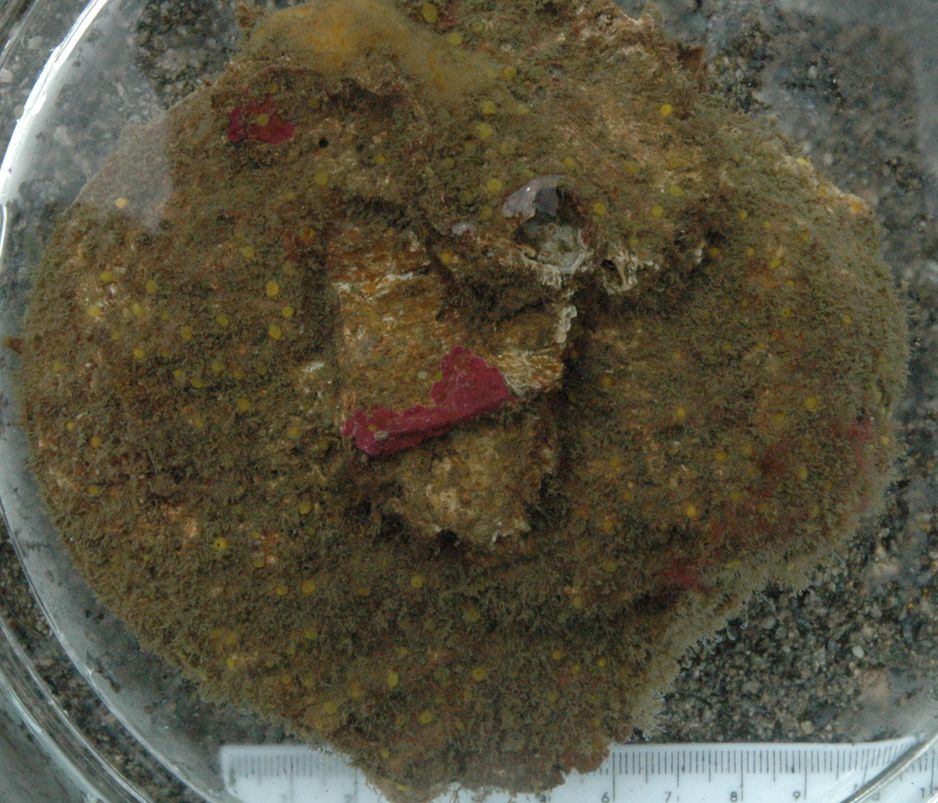
A view of the whole giant rock scallop shell which is infested with
the sponge.
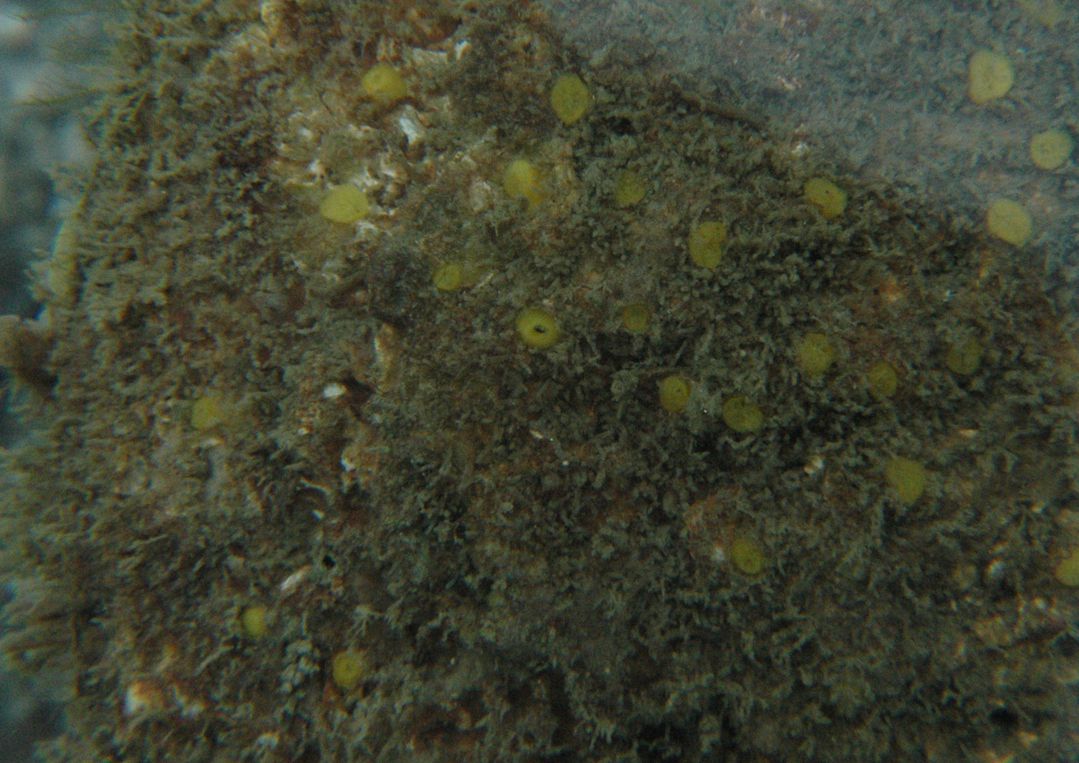
In this closeup view the individual oscula
can be seen at some openings and papillae
with pores in other openings.
Spicules consist of tylostyles 210-300 microns long. Photo by Haruka Ito, August 2014
| Cliona californiana frequently erodes shells of the giant rock scallop, Crassodoma gigantea. These photos show the effect of the erosion on the rock scallop shell. Note that the erosion is more severe on the outside of the shell than inside. Some of the larger holes on the outside were likely produced by other borers. | |
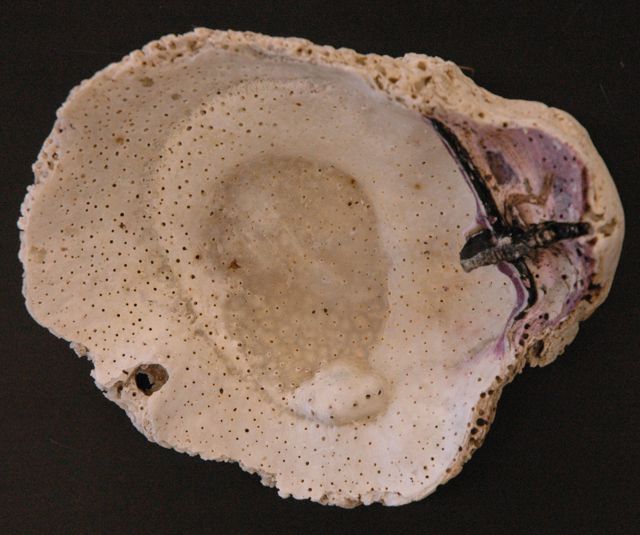 |
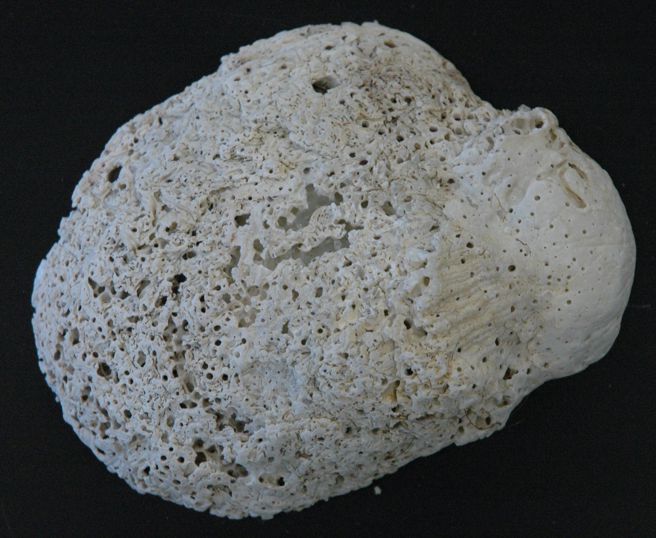 |
| Inside of shell | Outside of shell |
Authors and Editors of
Page:
Dave Cowles (2014): Created original page
CSS coding for page developed by Jonathan Cowles (2007)
Salish Sea Invertebrates web site provided courtesy of Walla
Walla University
